User worker runs
All objects created on Arkindex are created by either a user or a specific execution of a worker. When a result was created by the execution of a worker, it is signed by the corresponding worker run ID. This makes it possible to know which worker, with which configuration and model, created the object.
There are cases where you are creating an object without running a process in Arkindex but the worker run ID is mandatory. This can happen when:
- You run a worker locally (learn more about this in the Workers documentation) but want to publish results on Arkindex;
- You use the bulk endpoints of Arkindex’s REST API, in a script for example;
- You use some commands in Arkindex’s Command Line Interface.
In order to mimic a worker’s execution on Arkindex, you can create a user worker run.
Warning
To be able to create worker versions (and workers), you need the dedicated user permission. If you are unable to create workers and worker versions, contact an instance administrator.
To do so, access the worker runs page from the top right dropdown (the one that appears when you hover over your email address in a the navigation bar).
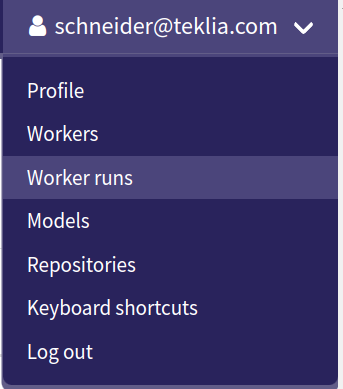
This page lists all your user worker runs.
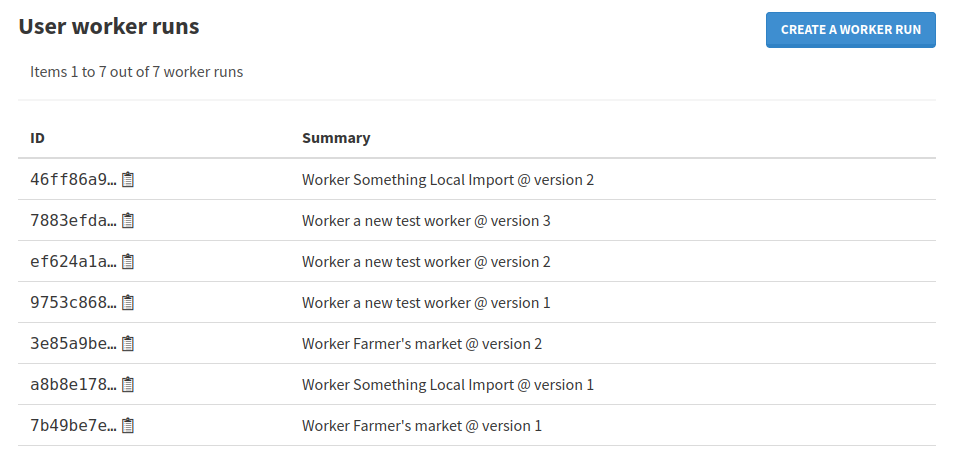
Warning
User worker runs are personal and can only be used by the user who created them.
To create a new worker run, click the “Create a worker run” button on the right. This opens a modal that lists all workers available to you. To create a user worker run, you need to first create a local worker, and a worker version for that worker.
Info
You can also use an existing local worker you have access to. There cannot be two user worker runs created from the same worker version, so if a worker run already exists for a worker version of that worker, you need to create a new worker version.
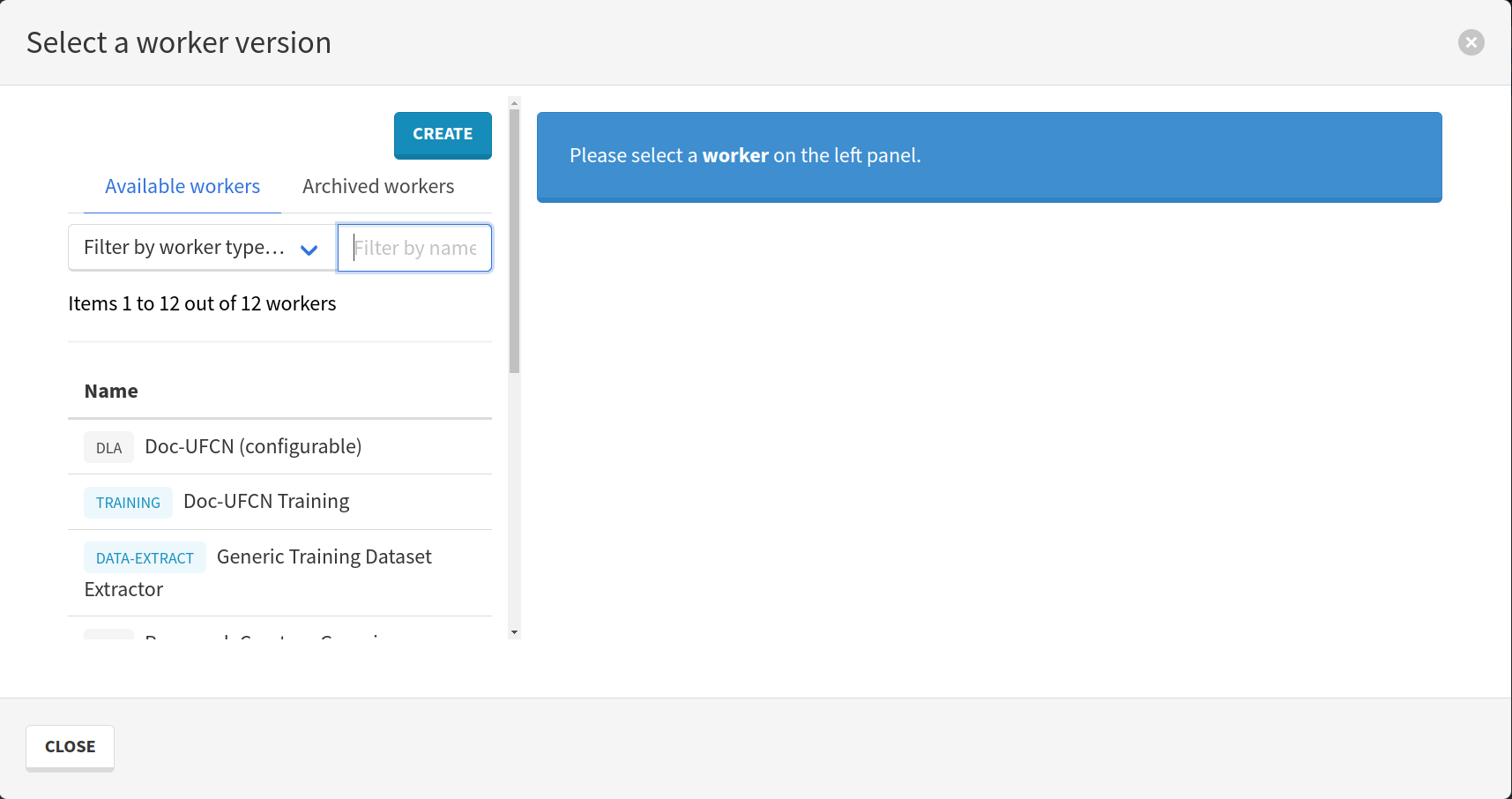
Create a local worker using the Create button in the left side panel.
Info
Just like for regular workers, the “type” of your worker can be anything. When listing workers, in the user worker run creation modal or elsewhere, you can filter workers by type to find them more easily.
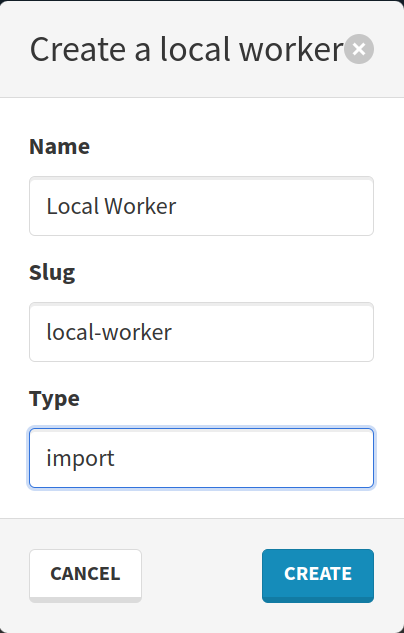
You must then create a new version for this local worker.
To do so, you must select your local worker in the list of workers. You might have to refresh the page for your new worker to appear in this list, and you can search for it by name using the search bar. Once your worker is selected, you can create a worker version by clicking the Create button under the Versions tab.
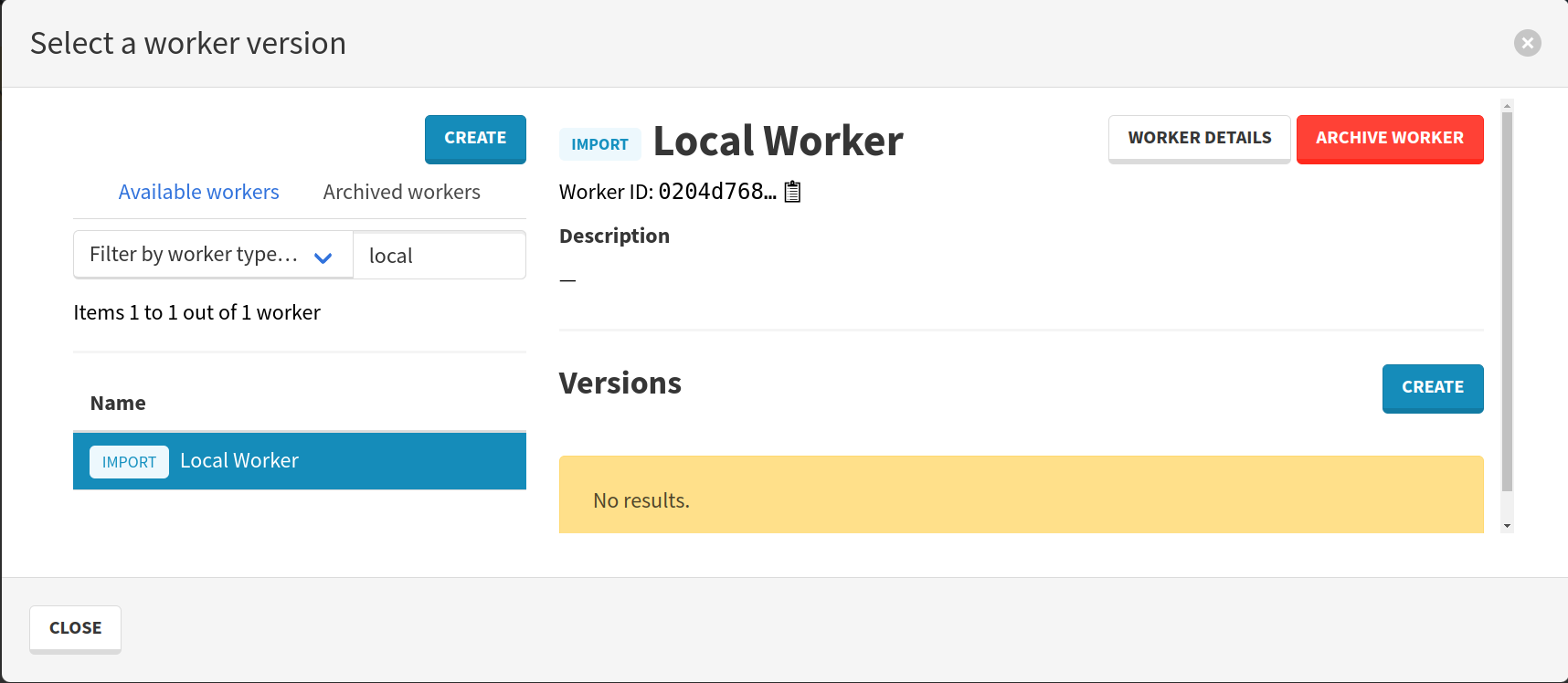
This opens a new modal for worker version creation.
To create a worker version for your local worker for the purpose of creating a user worker run, you can leave all the fields blank or with their default values, and click the “Create” button on the bottom-right corner of the modal right away.
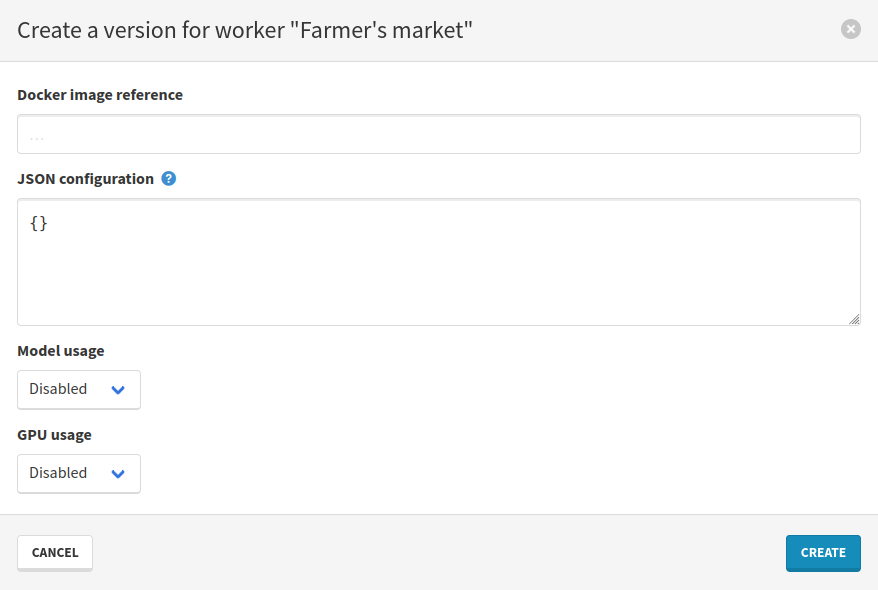
You can specify a Docker image tag when creating a worker version, which lets you import any Docker image as a worker that can be run just like any other worker in a process, as long as the image is available to the Ponos agent (which is the case for public Docker images).
If you don’t plan on running your local worker on Arkindex, you don’t need to specify any docker image reference.
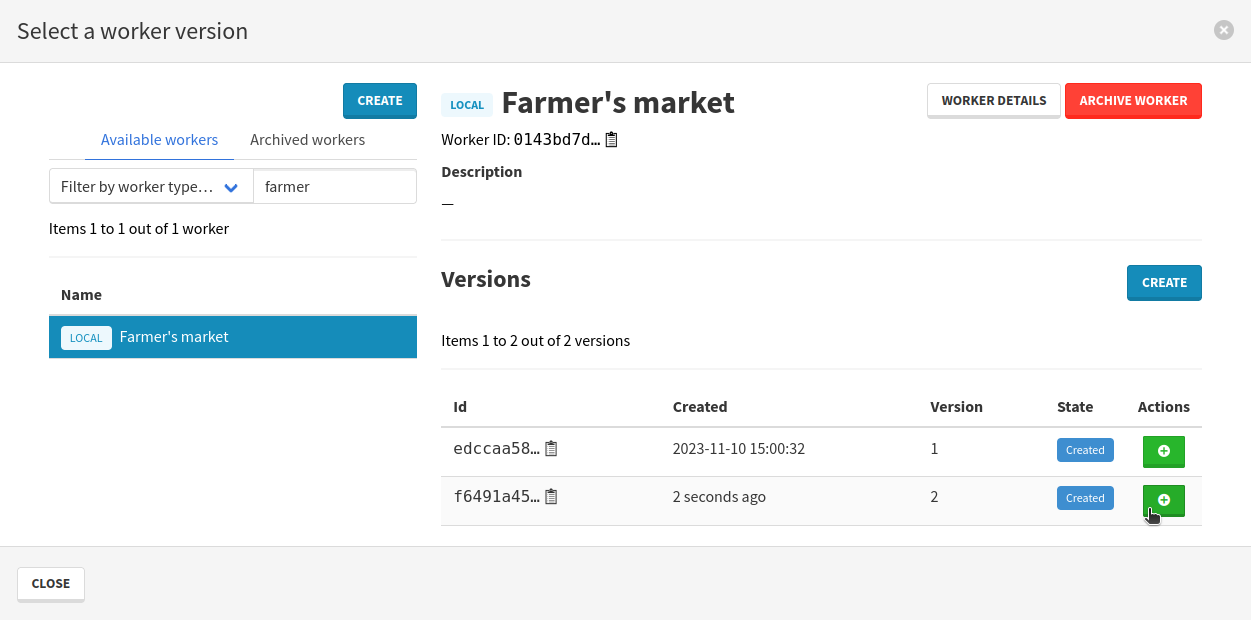
Finally, to create your user worker run you must first select the local worker in the modal, open the Versions tab, then click on the green “+” button next to the worker version. A green success notification appears at the top of the modal, displaying the ID of the new worker run, which now also appears in the worker runs list.
Again, you might have to refresh the page and reopen the worker run creation modal in order for your newly created worker version to appear on your worker.
You can use this user worker run ID in your scripts using the Arkindex API client, when using the Arkindex Command Line Interface, or to publish results on Arkindex when executing a worker locally.